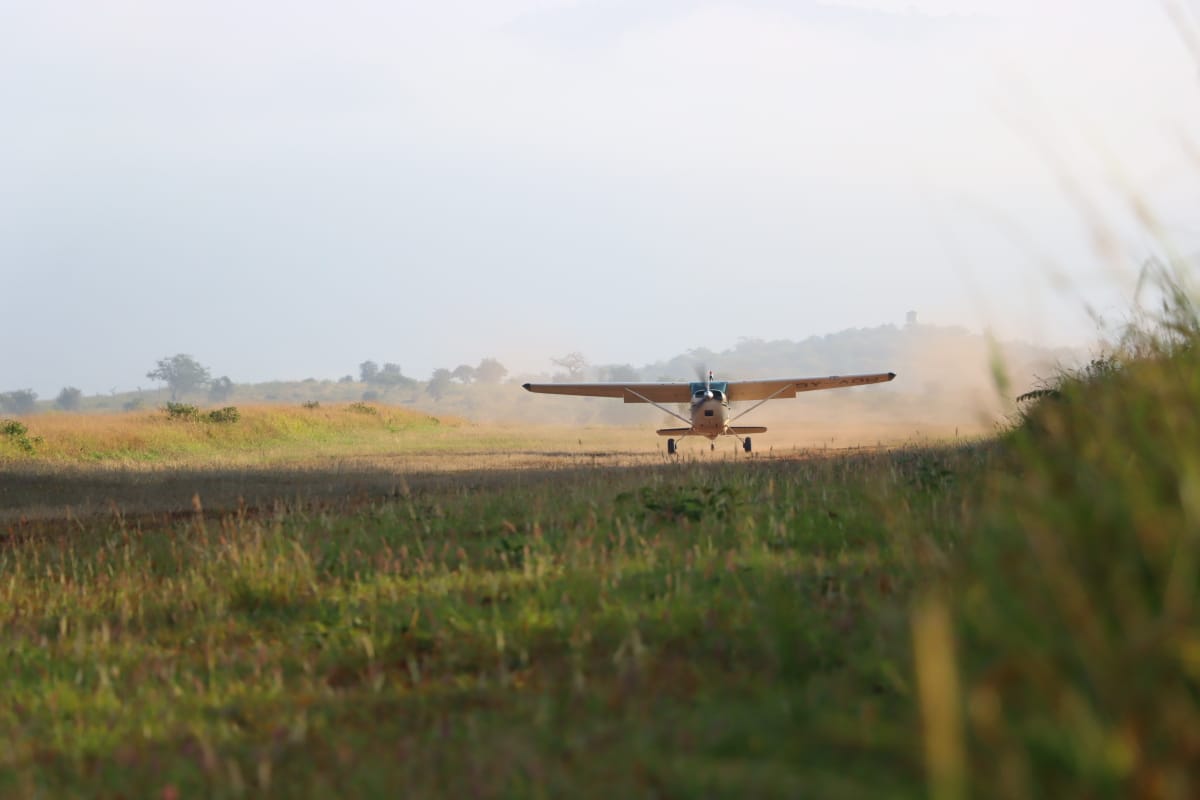 An aircraft taking off during the flagging off of wildlife census exercise at Taita Hills Resort/KNA
An aircraft taking off during the flagging off of wildlife census exercise at Taita Hills Resort/KNA
Wildlife Research and Training Institute (WRTI) flagged off ten caravans on Monday to carry out an eight-day wildlife census across the expansive Tsavo ecosystem to assess population trends in the park, which has been grappling with climate change-driven drought.
The exercise, organised by WRTI and which is a collaborative effort between the institute, Kenya Wildlife Service, and other key partners, aims to assess the population of key species and address challenges such as habitat loss, human-wildlife conflict, and the impact of climate change on biodiversity.
Speaking at Taita Hills Resort and Spa during the flagging off exercise, WRTI Director Dr Patrick Omondi, said the census is vital for evaluating wildlife population trends and informing conservation strategies.
He noted that the census, which takes place every three years, follows the devastating 2022 drought, which resulted in high wildlife mortality, particularly among buffaloes, zebras, and antelopes.
The census involves systematic aerial surveys using aircraft for large mammal counts, waterfowl assessments, and predator monitoring.
A team of 10 pilots has been deployed, with the ecosystem divided into blocks where each aircraft is assigned a specific block to prevent double counting and ensure accuracy.
Dr. Omondi explained that the exercise employs internationally recognized methods to gather reliable data, which will help determine if wildlife populations have increased or declined since the last census in 2021.
He emphasized that the census is crucial for identifying endangered, overpopulated, or stable species, which will guide the government and conservation organizations in formulating effective policies that ensure sustainable tourism to enhance economic development and environmental sustainability, in line with the Bottom-Up Economic Transformative Agenda (BETA).
“This census will support the development of county and protected area management plans while shaping conservation policies to protect our wildlife heritage and also help in curbing human-wildlife conflicts,” said Dr Omondi.
Additionally, he said the data would help monitor migration patterns, track species distribution, and evaluate the effectiveness of past conservation measures.
The director further revealed that similar exercises had been conducted in other major ecosystems, including Amboseli, Maasai Mara, Lake Nakuru, and Kapiti, with findings set to be released by Tourism and Wildlife Cabinet Secretary Rebecca Miano in June this year.
Mwatate MP Peter Shake welcomed the census activity, noting that while wildlife is a valuable resource for tourism, the increasing elephant population in Tsavo has intensified human-wildlife conflicts, leading to crop destruction and loss of lives.
“We urge the government to ensure timely compensation for victims of wildlife attacks. Communities should benefit from wildlife conservation and not to suffer from it. That way, they will see the value of the wildlife and they will embrace and co-exist with them,” said Shake.
Voi MP Abdi Chome stressed that the census would offer insights into wildlife migration patterns and the growing challenges of human-wildlife conflict.
“A good percentage of wild animal’s roam outside protected areas, which often leads to conflicts with local communities. Understanding these trends will help us address the rising tensions and be in a position to reduce cases of human-wildlife conflicts,” he said.
The census is expected to provide a comprehensive overview of the state of wildlife in Tsavo, enabling the government to develop policies that balance conservation efforts with community welfare.

